There’s been a bit of feedback — privately, which is fine — concerning my informal ‘Count The Fugal Entries!’ challenge in yesterday’s posting. As for what you might call ‘the results’, I’m not about to make a big deal about ‘who heard what’ — except in connection with two points that I think are important and relevant to the case I am building.
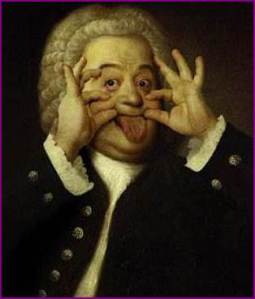 The first is that the highest totals were all reported by people who have been familiar with this particular fugue for decades. (In a more formal experiment of this kind, I would expect such people to recuse themselves because of ‘prior knowledge’ — or, at the very least, I’d put their results in a separate category.) The second point is that nobody at all reported hearing all the entries — no, not even the folks who’d had the piece in their ears and on their bookshelves since whenever, and not even the composers among their number (all of whom, incidentally, turned in higher scores than the non-composers: make of that what you will).
The first is that the highest totals were all reported by people who have been familiar with this particular fugue for decades. (In a more formal experiment of this kind, I would expect such people to recuse themselves because of ‘prior knowledge’ — or, at the very least, I’d put their results in a separate category.) The second point is that nobody at all reported hearing all the entries — no, not even the folks who’d had the piece in their ears and on their bookshelves since whenever, and not even the composers among their number (all of whom, incidentally, turned in higher scores than the non-composers: make of that what you will).
I’m in a slightly tricky position at this point, however. I try pretty hard to write these postings in a way that keeps them within the reach of ‘the music lover who doesn’t read music or have a technical vocabulary’ — while also doing my best to include things that will be of interest to the seasoned and trained musical professional. But one of the private messages I’ve now received is from someone whose question requires the kind of answer that threatens to make this tightrope act impossible to sustain. Will my ‘doesn’t read music’ readership now desert me in droves? Or come to some disastrously self-undermining (and wrong!) conclusion about their ‘lack of worthiness’ when it comes to music and its discussion? I sincerely hope not — though, at the same time, I know what people are like…
The question came from a reader in India (Hello, India!) who had gone and looked at a printed score of this fugue and counted fewer entries on the page than the 35 1/2 I mentioned. ‘Where are the others?’, I was, in effect, being asked.
Well, first, the truth is that I actually have more than 35 1/2: I didn’t include all of them in my total because I didn’t want to set an additional hare running in the form of a row over the question ‘When is an entry not an entry?’ Secondly, it so happens that I myself have actually seen a published analysis of this fugue that only reaches a total of 27 entries. Yup: sad, but true. So it really does seem that the only way I can proceed at this point is to present another recording of this fugue…
…and invite people to play it while they use their eyes to go through the written music (if they can: you see my dilemma?) in the following score.
Now, this is not going to be the usual kind of score we see in an edition of Bach’s ’48’ — which is the kind that’s used for performance and therefore divides the fugal voices between the player’s two hands and writes them out on two staves accordingly. This special kind shows the three fugal voices on three separate staves (it’s called ‘open score’, in case anyone is interested): writing it out this way makes it easier for me to show — by drawing all those asterisks and boxes! — the events that I have counted as entries of the fugue’s theme in its various forms. Yes, that’s two hours of my life I won’t ever get back. But at least by the end we’ll all know what’s going on here. Oh, no: we won’t ‘all’ know that, will we? Because I’ll unavoidably have excluded some readers (including some of my favourite people) from this aspect of my discussion. But, you know, I actually have a feeling that even that issue will prove to be relevant to my final conclusions…
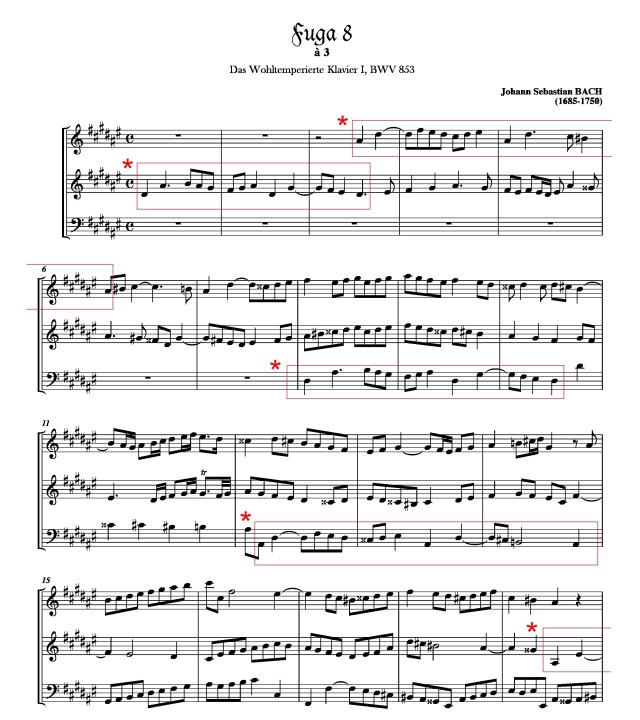
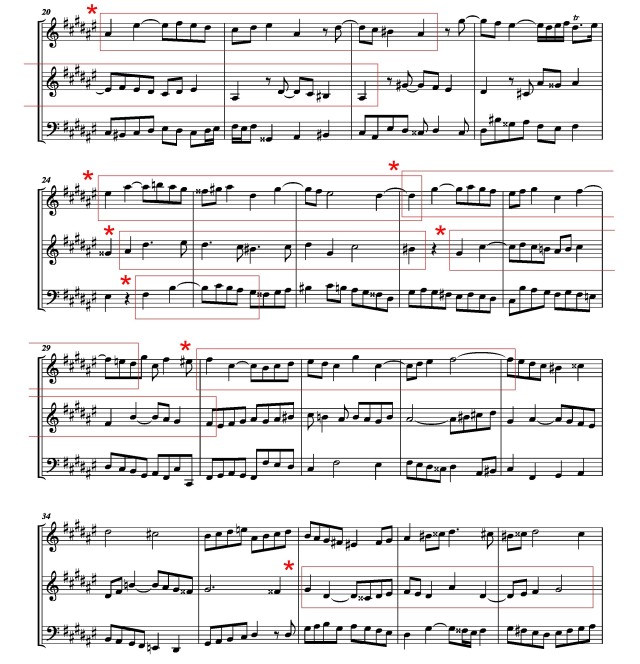
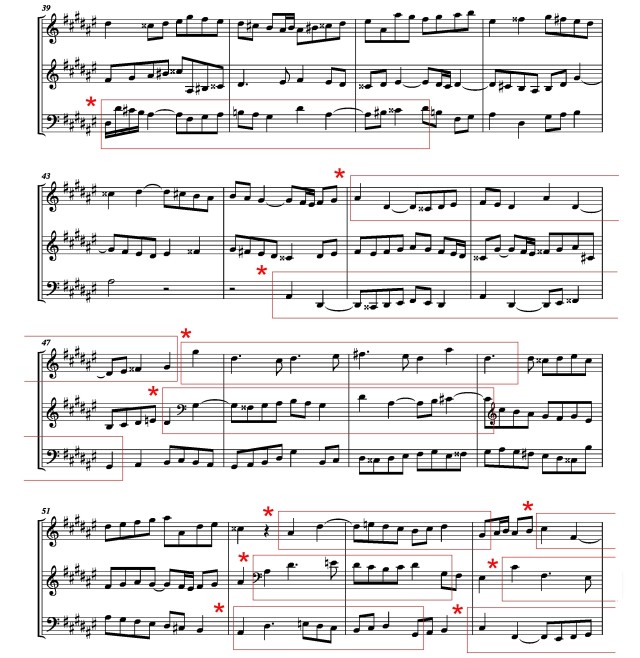
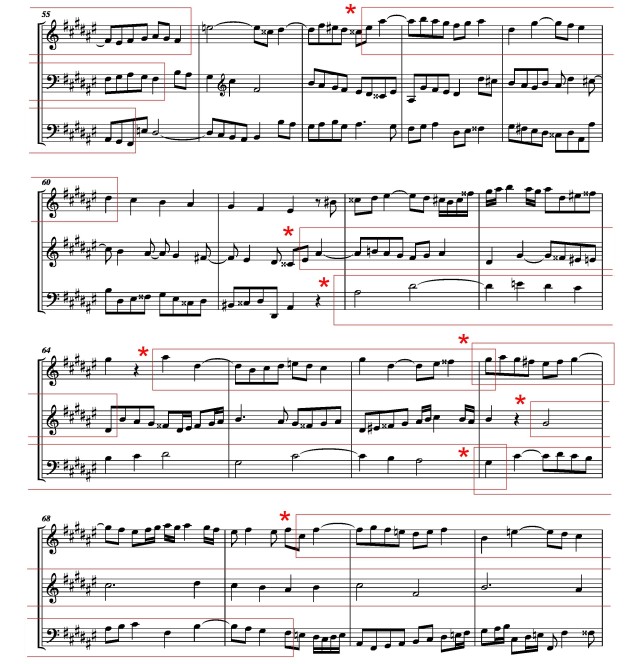
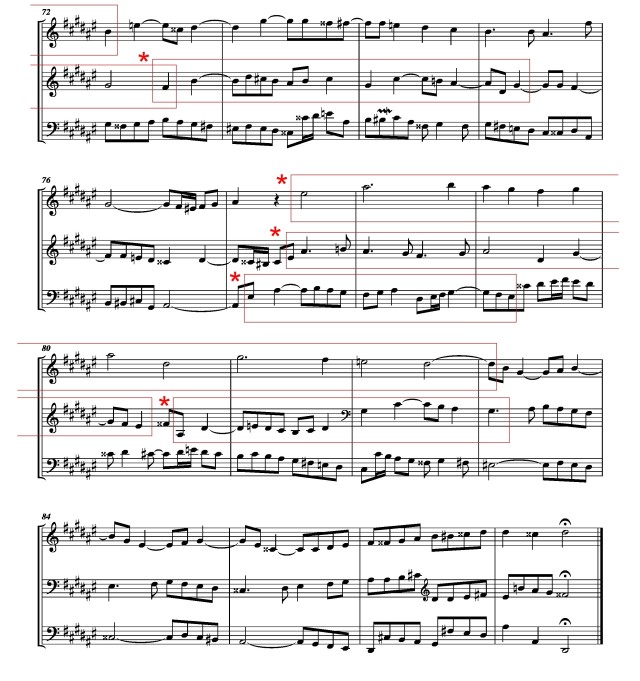
So: how many did you get that time…?!?
MD
 If you’ve enjoyed reading this or another posting, please consider making an anonymised micro-donation in return! Micro-donation — 50p, 50c, whatever — is the way to sponsor the creation of quality content outside the control of corporate-owned and power-serving media structures. To micro-donate to me, anonymously, simply click on the button… Thanks!
If you’ve enjoyed reading this or another posting, please consider making an anonymised micro-donation in return! Micro-donation — 50p, 50c, whatever — is the way to sponsor the creation of quality content outside the control of corporate-owned and power-serving media structures. To micro-donate to me, anonymously, simply click on the button… Thanks!
If it takes this many thousand words of detailed argument – not to mention various YouTube clips and musical examples as well – to show that we all know a fugue when we see one, and to counter Sue’s original point, doesn’t that perhaps suggest that her tweet has some validity? (And, in passing, I’m shocked that you aren’t familiar with her work, either as a performer or a writer. OK, you would have missed the early stuff, on account of age – she was a near contemporary of mins as a Cambridge undergrad in the early 70s – but there’s been plenty since, not to mention some recordings that have stood the test of time…)
LikeLike
The question is of course whether entrances are ‘real’ entrances, or just ‘fake’, especially in the stretto sections of the piece. [Like so often, the composer has to adapt / change / shorten the subject in these sections ] For example: Is the bass entrance in msr. 24 really an entrance, or just the suggestion of an entrance of the subject?
The subject in contrary motion (from 30) many people probably will not perceive, which is probably even more true for the combinations of subject, the subject in augmentation and in contrary motion, all in stretto-form, towards the end of the piece…
I mentioned the piece (shortly) also in my text on Fugues see https://martijnhooning.wordpress.com/
Nice post!
LikeLike